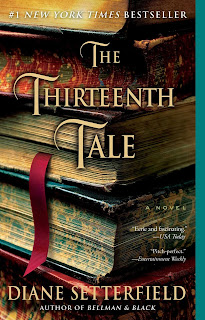Things that brought me delight in October, 2019.
Claudio Simonetti's Goblin performing Deep Red
We were lucky enough to catch Goblin performing the score to a screening of Deep Red. After the movie, they did a full set of their horror movie soundtrack work.
William Gaddis, Carpenter's Gothic
A more difficult novel than some--it's told in unattributed dialog that spills over and interrupts itself--but this is a potent updating of the Gothic novel that encapsulates the dread of America's foul mixture of religion, money, abuse, and politics.
Rob Zombie, Mondo Sex Head
I never really think that remixes of Rob Zombie's music live up to the originals, but this is a fun disc to spin in the run-up to Halloween.
The Monster Squad
Believe it or not, I hadn't seen The Monster Squad before. I would probably have had a fierce nostalgia for it if I had, but even without that it's a fun little movie.
Nox Arcana, The Haunted Symphony
It just doesn't feel like October without some haunted attraction music.
Art from friends
Met up with some friends passing through on their way back from a wedding and was gifted this incredible photo!
More art from friends!
Becky Munich sent me this delightfully disturbing Halloween card.
Our usual corn maze had a wack theme this year, so we went to this dinosaur one instead.
Fritz Leiber, Conjure Wife
Chas Addams, The Addams Family: An Evilution
This history of the Addams Family cartoons collects all of Chas Addams' illustrations alongside a solid history of the family in print. If you're going to get one Addams Family collection, this is the one to look for.
Diane Setterfield, The Thirteenth Tale
I planned on reading a hundred pages of The Thirteenth Tale a day, but I got engrossed in it and ended up reading the remaining two hundred pages in one fell swoop. If you like the classic Gothic novel, this one is a treat. It hits all the major tropes, but in a way that did not feel derivative to me.
Malifaux 3e: Guild Faction Book
The thing about Malifaux is that it even makes its corporate cops interesting to me.
B/X Mars
I talked this up here.
Planescape: Planes of Conflict
I probably wouldn't use this whole-hog, but there is a lot worth stealing from this set.
Goblin, Music for a Witch
This has been in constant rotation since I saw Goblin live.
The Addams Family
I'm a mark for Addams Family stuff, but this movie definitely exceeded my expectations!
Zombieland
Good-natured zombie flicks like Zombieland that don't do the Walking Dead thing of having mankind be the real monster feel weirdly like spring break flicks to me, but anyway I'm here for it.
Donald A. Wollheim (ed), More Macabre
I picked up a copy of this anthology for a couple bucks at an auction house. There are some classics in here ("The Yellow Wall-paper," "The Spider") but also some noteworthy stories that were new to me, such as Richard Matheson's tale of a man who returns from a research expedition to find his wife pregnant--though she insists it is not the child of another man, a story by Theodore Roscoe about the horrors of Lot's Wife, and Philip M. Fisher's "Fungus Isle"--which does exactly what it says on the tin.
Marjorie Liu and Sana Takeda,
Monstress Volume Four: The Chosen
I love Monstress, but I also sometimes feel like I need a guide to keep track of everything that's going on in it.
Zombieland: Double Tap
If you liked the first one, you'll like this one too.
Tamsyn Muir, Gideon the Ninth
at the start, Gideon the Ninth is a bit like Harry Potter if all the students were necromancers accompanied by sword-wielding bodyguards and Hogwarts was a deathtrap puzzle-palace where graduation meant godhood. In the middle, it turns into Clue set in a haunted space mansion. Which I like extremely. Hard not to see the tragic ending coming a mile away, but I enjoyed it and liked these shitbag characters enough that I hope things work on better for them in the sequels. God-dammit, you made me care about these horrible people, Muir!
Kentaro Miura, Berserk vol. 40
R. D. Laing's theory of the divided self gets a hell of a workout in this one.






























